Test: Analog Electronics - 2 - Electrical Engineering (EE) MCQ
25 Questions MCQ Test - Test: Analog Electronics - 2
Figure is a 24 Vr stabilized power supply. The zener is 24 V, 600 mW. The minimum zener current is 10 mA. Proper values R and maximum load current are
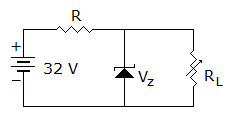

The open loop gain of an amplifier is 200. If negative feedback with β = 0.2 is used, the closed loop gain will be
In a class C power amplifier the input signal has a frequency of 250 kHz. If the collector current pulses are 0.1 μs wide, the duty cycle of current waveform is
In figure, voltage across R2 = + 10 V. If VBE = 0.7 V and VE = 0.7 V and RE = 10 kΩ, current through RE is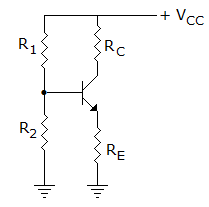
A 12 kHz pulse wave-form is amplified by a circuit having an Upper cut-off frequency of 1 MHz. The minimum input pulse width that can be accurately reproduced is
Ac signals are given to both inverting and non-inverting terminals of an op-amp. When will the output maximum
In a bridge rectifier circuit the rms value of input ac voltage is 10 V. The PIV across each diode is
In a half wave diode rectifier circuit the current flows in the load circuit for
A transistor with a = 0.9 and ICBO = 10 μA is biased so that IBQ = 90 μA. Then IEQ will be
In figure, transistor βdc = 100 and LED voltage when it is conducting is 2 V. Then the base current which saturates the transistor is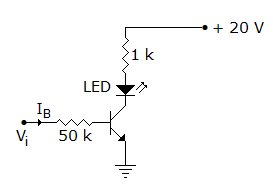
In figure the dc emitter current of each transistor is about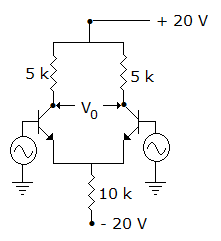
The input voltage for starting oscillations in an oscillator is caused by
The current flowing in a certain P-N junction at room temperature is 2 x 10-7 Amp. When a large reverse biased voltage is applied. Calculate the current flowing when 0.1 volts is applied.
In following figure find VDSQ by assuming gate current is negligible for the p-channel JFET. (if IDQ = - 6 mA, RS = 0, VDD = -18 V, RD = 2 kΩ, IDSS = - 10 mA, IPO = - 3 V)
Which of the following power amplifiers has highest efficiency?
A full wave rectifier using centre tapped transformer and a bridge rectifier use similar diodes and have equal no load output voltage. Under equal load conditions
Assume that op-amp in figure is ideal. If input Vi is triangular, the output V0 will be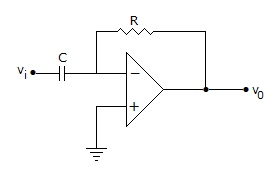
In an amplifier with a gain of - 1000 and feedback factor β = - 0.1, the change in gain is 20% due to temperature. The change in gain for feedback amplifier will be
In the diode circuit of figure the diodes are ideal. The average current through ammeter is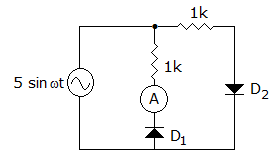


 .
.  .
.
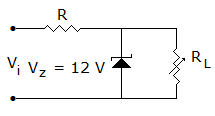
 .
.




 minimum Power(P) = 10 tr
minimum Power(P) = 10 tr  10 x 0.35 μ sec = 3.5 μ sec.
10 x 0.35 μ sec = 3.5 μ sec. 990 μA.
990 μA. .
. . It divides equally between the two transistors.
. It divides equally between the two transistors.
 -6 V.
-6 V. . When gain changes,
. When gain changes,  age change in
age change in
 .
.










